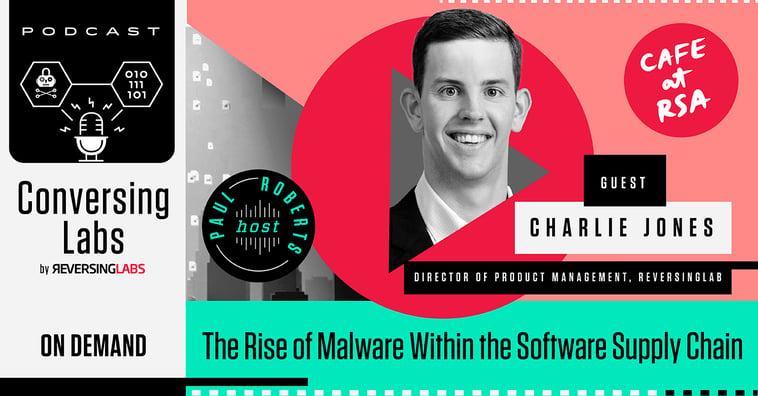
The rise of malware in the supply chain – and what to do about it
Learn more
Malware — A shortened form of the term "malicious software," it encompasses any software explicitly designed to harm, exploit, or compromise computer systems, networks, or devices. Malware manifests in various forms, each with distinct malevolent purposes and behaviors.
• Security preparedness: Knowledge of the adversary is essential to an effective defense. Understanding malware empowers organizations to identify vulnerabilities and craft proactive security measures.
• Data protection: Malware frequently aims to steal sensitive data, potentially leading to financial losses or damage to an organization's reputation. Understanding malware is instrumental in safeguarding data.
• Compliance: Regulatory frameworks mandate organizations to institute robust protections against malware.
• Business continuity: Malware attacks can severely disrupt operations, and knowledge about malware facilitates the formulation of strategies to minimize downtime.
• Viruses: These malicious entities attach themselves to legitimate files or programs and spread rapidly when users execute them, earning them notoriety for their swift propagation.
• Trojans: Trojan horses disguise themselves as legitimate software, deceiving users into granting unauthorized access or control to cybercriminals.
• Ransomware: This virulent malware encrypts data and subsequently demands a ransom for the decryption keys, wreaking havoc on organizations' data security.
• Spyware: Spyware covertly monitors and collects information about a user's activities, potentially leading to the exposure of sensitive data.
• Adware: Adware primarily inundates users with unwanted advertisements, but its actions can infringe upon user privacy, making it a nuisance and security concern.
• Worms: Worms are self-replicating malware that can autonomously spread across networks, often without user interaction, making them highly contagious.
• Botnets: Cybercriminals harness botnets, networks of compromised devices, for various nefarious activities, including distributed denial-of-service (DDoS) attacks and spam campaigns.
• Rootkits: Rootkits employ stealthy techniques to conceal their presence on a system by modifying system files or processes, making their detection and removal challenging.
• Data security: Malware prevention measures ensure the security of sensitive data, thwarting attempts by cybercriminals to steal or compromise it.
• Cost savings: Preventing malware attacks saves organizations from substantial financial losses associated with ransom payments, data recovery costs, and potential legal liabilities.
• Reputation management: A proactive stance against malware incidents helps maintain trust and a positive reputation among customers and partners, safeguarding an organization's standing.
• Operational continuity: By mitigating the impact of malware, organizations can minimize downtime and maintain uninterrupted business operations.
• Compliance adherence: Malware prevention is often a key component of regulatory compliance, ensuring that organizations meet legal requirements and avoid costly penalties.
• Employee training: Empower your employees with knowledge about the risks associated with malware, phishing, and safe online behavior. Educated employees are your first line of defense.
• Antivirus software: Implement robust antivirus and anti-malware solutions across your network and regularly update them to detect and neutralize known threats.
• Firewalls: Deploy firewalls to filter incoming and outgoing network traffic, blocking malicious activity and unauthorized access.
• Patch management: Keep your software and operating systems up to date to address known vulnerabilities that malware often exploits.
• Email filtering: Employ advanced email filtering solutions to identify and block suspicious attachments and links before they reach your inbox.
• Access control: Limit user access to sensitive data and network resources, reducing the potential exposure to malware attacks.
• Network segmentation: Segment your network to contain and isolate potential malware outbreaks, preventing lateral movement by cybercriminals.
• Phishing detection: Implement cutting-edge detection solutions to identify and block phishing emails, a standard vehicle for malware delivery.
• Endpoint protection: Endpoint protection platforms safeguard individual devices, ensuring they intercept malware threats before they can be compromised.
• Behavioral analysis: Advanced behavioral analysis tools can identify and mitigate zero-day malware threats—those with no known signature.
• Security information and event management (SIEM): SIEM solutions can detect and respond to malware incidents in real time, enhancing your organization's overall security posture.
Understanding malware is a necessity for safeguarding your organization's digital assets, data, and reputation. By embracing effective malware prevention measures and staying abreast of the latest threats, you can proactively defend against the ever-evolving landscape of malicious software. It is not a matter of if but when the next malware attack will occur. Preparedness and knowledge are your best allies in this ongoing battle for digital security.
For further insights into malware, explore the following articles:


